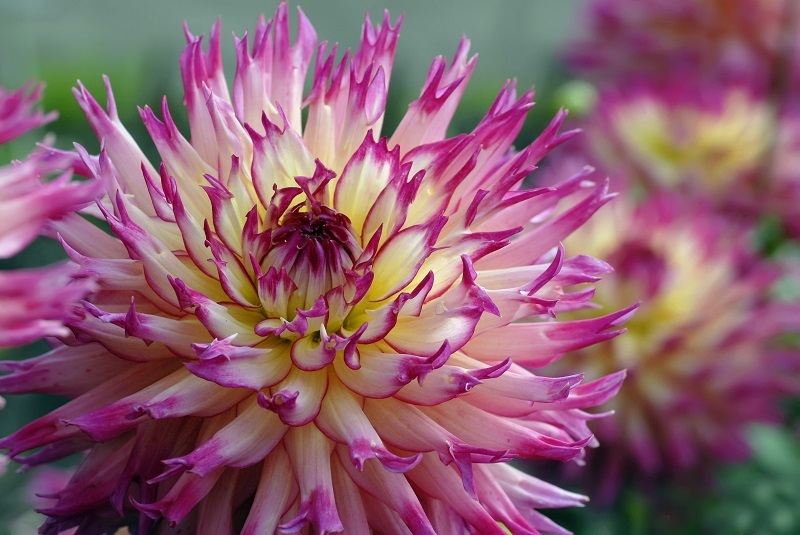Master Gardeners Share Secrets to Stunning Hydrangea Blooms
Posted on 17/08/2025
Master Gardeners Share Secrets to Stunning Hydrangea Blooms
Are you dreaming of lush hydrangea blooms in your garden? Learn from experienced master gardeners who reveal the key secrets to growing vibrant, healthy hydrangeas. In this comprehensive guide, we'll explore expert planting tips, care routines, common pitfalls, and advanced techniques for creating a breathtaking hydrangea display that will make your neighbors envious!

Hydrangea Varieties: Choose the Right Type for Your Garden
There is no one-size-fits-all approach to hydrangeas. Understanding the various hydrangea types is essential for cultivating the most impressive blooms.
Popular Hydrangea Species
- Bigleaf Hydrangea (Hydrangea macrophylla): Known for large, mophead or lacecap blooms, often in shades of blue, pink, or purple.
- Panicled Hydrangea (Hydrangea paniculata): Features cone-shaped white flowers that often turn rosy-pink as they mature.
- Smooth Hydrangea (Hydrangea arborescens): Offers globe-shaped blooms, most notably in the popular 'Annabelle' cultivar.
- Oakleaf Hydrangea (Hydrangea quercifolia): Distinctive for its oak-shaped leaves and elongated white flower clusters.
- Climbing Hydrangea (Hydrangea anomala petiolaris): A unique climbing variety with lacy, fragrant white blooms.
Tip: Select the hydrangea variety that best suits your climate, available space, and preferred flower color for optimal results.
The Best Planting Practices for Hydrangea Success
A thriving hydrangea starts with proper planting. Master gardeners recommend following these actionable steps:
Site Selection
- Light: Most hydrangeas prefer morning sun and afternoon shade. Too much sun can scorch leaves; too little light may reduce blooming.
- Soil: Hydrangeas love rich, well-drained, yet moisture-retentive soil. Amend with organic matter like compost or leaf mold.
- Spacing: Allow enough room for air circulation to prevent fungal diseases.
Planting Hydrangeas Step-By-Step
- Dig a hole twice as wide and as deep as the root ball.
- Mix in compost with the removed soil for nutrients and drainage.
- Gently loosen the roots before planting.
- Plant hydrangeas at the same depth as they were in their containers.
- Thoroughly water in your new hydrangea, and apply mulch to conserve moisture.
Pro Tip: Plant in early spring or autumn for best results. Avoid hot summer days to reduce transplant shock.
Essential Hydrangea Care for Big, Beautiful Blooms
Master gardeners emphasize that proper ongoing care leads to stunning hydrangea blossoms. Here's what's required for a season of sensational color:
Watering Wisdom
- Hydrangeas need consistently moist soil, especially during hot weather and while establishing roots.
- Deep water 1-2 times per week rather than frequent shallow watering.
- Mulch helps retain moisture and suppresses weeds.
Feeding for Fabulously Large Blooms
- Fertilize in spring: Use a balanced, slow-release granular fertilizer or organic compost.
- Avoid high-nitrogen formulas, which promote foliage at the expense of flowers.
- *Note: Bigleaf and mountain hydrangeas rarely need additional fertilizer if your soil is rich.
Pruning Hydrangeas: Timing is Everything
- Bigleaf and Oakleaf Hydrangeas: Bloom on old wood (last year's growth). Prune immediately after flowering, not in spring.
- Smooth and Panicle Hydrangeas: Bloom on new wood (current season's growth). Prune in late winter or early spring before new growth starts.
- Remove only dead, damaged, or crossing stems for general maintenance on all types.
Unlocking Amazing Hydrangea Colors: Soil Secrets
One magical aspect of hydrangeas is their ability to change color. Here's what gardening experts say about turning your blooms pink, blue, or purple:
Soil pH and Hydrangea Color
- Acidic Soil (pH below 6.0): Produces blue flowers on bigleaf hydrangeas.
- Alkaline Soil (pH above 7.0): Grows pink hydrangea blooms.
- Neutral to Slightly Acidic (pH 6.0-7.0): Results in purple and lavender hues.
- White hydrangeas generally remain white regardless of soil pH.
If you want to change your hydrangea's bloom color:
- For Blue Blooms: Add soil acidifier, aluminum sulfate, or pine needles.
- For Pink Blooms: Add garden lime to raise the soil's alkalinity.
- Always test soil first and adjust slowly to prevent stressing your plants.
Advanced Secrets to Thriving Hydrangea Plants
Deadheading for Repeated Blooms
- Snip spent flower heads just above the first set of healthy leaves to encourage new hydrangea blossoms.
- Avoid deadheading if you desire attractive dried flowers or winter interest in the garden.
Managing Hydrangea Pests and Diseases
- Hydrangeas are generally resilient, but slugs, spider mites, and aphids can sometimes cause trouble.
- Regular inspection and prompt removal of pests help protect your plants.
- Provide good air circulation and avoid overhead watering to minimize fungal issues like powdery mildew or leaf spot.
Winter Protection for Hardy Blooms
- In colder climates, mulch heavily around the base of your hydrangeas to insulate roots.
- For marginally hardy varieties, wrap plants with burlap or use plant protectors to guard against freeze-thaw cycles.
Staking Tall Hydrangeas
- Some varieties, like Annabelle, produce massive blooms that may flop after rain. Stake stems early to offer support.
Frequently Asked Questions about Growing Spectacular Hydrangeas
Why Won't My Hydrangea Bloom?
- Pruning at the wrong time
- Planting in deep shade
- Late spring frosts
- Excessive fertilizer
Solution: Identify your hydrangea type and adjust care routines accordingly. Monitor sunlight, protect from late frosts, and use the correct fertilizer type.
How Do I Get Bigger Hydrangea Blooms?
- Feed with a bloom-boosting fertilizer in early spring.
- Prune appropriately for your hydrangea species.
- Water deeply during dry spells and mulch roots for moisture retention.
- Avoid cutting flower buds when pruning old-wood bloomers like bigleaf hydrangeas.
Can I Grow Hydrangeas in Pots?
- Yes! Choose compact varieties for containers, use high-quality potting mix, and ensure good drainage.
- Protect container-grown hydrangeas from extreme winter cold.
When is the Best Time to Prune Hydrangeas?
- Prune smooth and panicle hydrangeas in late winter or early spring, as they flower on new wood.
- Prune bigleaf and oakleaf hydrangeas right after blooming, as they flower on old wood.
Designing a Stunning Hydrangea Border
- Mix different hydrangea species for a long season of blooms and varied forms.
- Pair hydrangeas with shade-loving perennials like hostas, ferns, and astilbe for a layered look.
- For dramatic effect, plant in clusters of odd numbers (3 or 5), and stagger heights.
- Use hydrangeas as foundation plants, mixed borders, or focal points in beds.
Cut Hydrangeas for Beautiful Bouquets
- Cut blooms early in the day when flowers are fully hydrated.
- Place stems immediately in water for the best vase life.
- To dry hydrangeas, wait until blooms feel papery before cutting and hang stems upside down in a dry, dark place.

Summary: Master Gardeners' Top Tips for Beautiful Hydrangea Flowers
- Choose the right hydrangea variety for your climate and needs.
- Plant in optimal light and prepare soil rich in organic matter.
- Water deeply and mulch regularly to conserve moisture.
- Feed appropriately with balanced or organic fertilizers.
- Prune correctly based on bloom type: old wood vs. new wood.
- Adjust soil pH for desired flower color on bigleaf types.
- Protect from pests, diseases, and winter extremes.
Conclusion: Grow Your Own Show-Stopping Hydrangeas!
From soil secrets and color tricks to advanced pruning and care routines, following these master gardener-approved tips will transform your hydrangea bushes into splendid garden highlights. With a bit of effort and expert know-how, stunning hydrangea blooms can light up your landscape year after year.
If you're ready to impress with abundant, colorful hydrangea flowers, put these gardening secrets into practice today -- and enjoy a new level of garden beauty!







